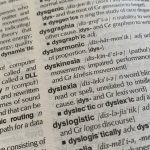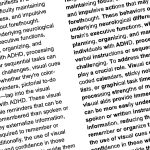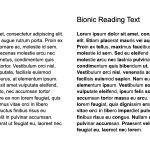Last Updated on 22/11/2025 by James Barron
Abstract
The SEN Register stands as a pivotal instrument in promoting inclusive education, aiming to cater to the diverse needs of children with Special Educational Needs (SEN). Rooted in principles advocating for inclusivity, the SEN Register meticulously records the unique requirements of these children, the support rendered, their academic progress, and relevant external agency involvements. By centralising this information, it facilitates effective communication, promotes accountability, tracks progress, and ensures individualised learning experiences. Furthermore, its structured functioning emphasises identification, documentation, intervention planning, and collaboration with specialists. While the inclusion of a child on the SEN register can evoke mixed emotions among guardians, it is crucial to recognise its primary role as a supportive mechanism. Parents are encouraged to communicate with educational institutions to stay informed about their child’s status and available resources. Age is not a limiting factor for SEN registration, with its importance stretching from early childhood education through further studies. This paper underscores the indispensability of the SEN Register in achieving educational equity, ensuring that children with SEN are given opportunities to thrive academically alongside their peers.
Introduction
The SEN Register is a tool commonly used in educational settings to monitor and track the support given to children with Special Educational Needs (SEN). The concept of the SEN Register is rooted in the principles of inclusive education, ensuring that all children, regardless of their abilities, receive the support and provisions they require to thrive academically and socially. This article will delve into the purpose and importance of the SEN Register, as well as how it functions as an essential mechanism in the wider framework of inclusive education.
The Purpose of the SEN Register
At its core, the SEN Register serves as a record of students identified with special educational needs within an institution. The register often contains vital information about each student’s specific needs, interventions provided, progress made, and any external agencies involved. By maintaining a centralised record, educators can ensure that the necessary support is consistently delivered and that there’s an ongoing evaluation of its effectiveness.
This centralised system aids in various key areas:
Streamlined Communication: By maintaining a record of each child’s needs and the interventions provided, educators can communicate more effectively about what each child requires. It ensures that everyone, from teachers to support staff, is informed and aligned in their approach.
Accountability: The register holds schools accountable. By documenting interventions and support, schools can demonstrate their commitment to inclusive education and show that they are taking tangible steps to cater to students with SEN.
Tracking Progress: The register allows schools to monitor a student’s development and the effectiveness of interventions over time. If an approach isn’t working, this can be adjusted so that it works more efficiently.
The Importance of the SEN Register in Inclusive Education
Inclusive education champions the idea that every child, regardless of their abilities or needs, has a right to participate in mainstream education. The SEN Register is instrumental in realising this vision.
Ensures Equal Opportunities: By identifying children with SEN and ensuring they receive the support they need; we are ensuring that they have an equal opportunity to succeed in education. This can help bridge the achievement gap often seen between students with and without SEN.
Promotes Individualised Learning: Inclusive education recognises that children learn differently. The SEN Register provides a mechanism for tailoring education to individual needs, ensuring that every child’s learning style and challenges are acknowledged and addressed.
Facilitates Early Intervention: Early identification and intervention can drastically improve outcomes for children with SEN. The register plays a crucial role in this, enabling schools to pinpoint and act on issues as they arise.
Functioning of the SEN Register
A well-maintained SEN Register usually follows a structured format:
Identification: This is the first stage where students who might require additional support are identified. This can be through teacher observations, academic assessments, or parental concerns.
Documentation: Once identified, a student’s specific needs, challenges, and any diagnoses are documented. This might include information from educational psychologists, therapists, or medical professionals.
Intervention Planning: Based on the identified needs, an Individual Education Plan (IEP) or similar might be developed. This will detail specific targets, strategies, and support that will be provided.
Review: Regular reviews are integral to ensure the effectiveness of the interventions. Adjustments can be made based on progress or any changes in the student’s needs.
Collaboration: Many students with SEN require support from external agencies or specialists. The register ensures that there’s coordinated support between the school and any external partners.
Is this something to worry about?
Having a child on the SEN (Special Educational Needs) register can elicit a range of emotions in parents and guardians, from concern to relief. The key thing to understand is that the SEN register is fundamentally a supportive tool designed to ensure that children receive the necessary assistance and adaptations they need to succeed in their educational journey. Here are some points to consider when understanding the implications of a child being on the SEN register:
Personalised Support: If a child is on the SEN register, it means that the school recognises the child’s unique learning needs and is committed to providing tailored support. This can be beneficial for the child, as they receive targeted interventions to help them overcome specific challenges.
Early Intervention: Often, early identification and intervention can make a significant difference in a child’s educational trajectory. If a child’s challenges are identified early and they are placed on the SEN register, it allows for timely interventions which can lead to better long-term outcomes.
Regular Review: The SEN register isn’t static. Children on the register undergo regular reviews to assess their progress and the effectiveness of the interventions. This means that the support they receive is continually adapted to their changing needs.
It Doesn’t Label the Child: Being on the SEN register doesn’t label a child as “less capable.” Instead, it recognises that every child is unique, and some may need different types of support to achieve their full potential.
Emotional Response: It’s natural for parents to have concerns or worries when they first learn their child has special educational needs. It’s essential to communicate with educators, seek support, and focus on understanding the child’s needs better. It’s also crucial to remember that every child has their strengths and areas of challenge, and the SEN register is there to support the latter.
Collaboration is Key: Schools, parents, and specialists collaborate to ensure that a child with SEN receives the best possible support. Being proactive, attending meetings, and working together with the school can lead to the best outcomes for the child.
Seeking Further Guidance: If parents are concerned about their child being on the SEN register, they should seek further information from the school or educational psychologists. This can help provide clarity on the reasons for the decision and the support that will be given.
How do I know if my child is on the SEN register?
Understanding whether your child is on the SEN (Special Educational Needs) register is crucial for parents to ensure they’re fully informed and engaged in their child’s educational journey. Schools have a duty to communicate openly with parents about any concerns regarding a student’s educational progress or needs. If educators believe that a child might benefit from being on the SEN register, they typically initiate a conversation with the parents to discuss their observations, assessments, and recommended interventions. If you suspect that your child might be on the register or if you haven’t been communicated with directly, you can proactively approach your child’s teacher or the school’s SENCO (Special Educational Needs Coordinator) to inquire. Open dialogue is crucial; schools should provide clarity on any support measures in place and any potential adjustments to your child’s learning environment.
Which school ages qualify for the SEN register?
The eligibility for the SEN (Special Educational Needs) register isn’t strictly determined by school age but rather by the specific needs of individual students. However, students can be identified as having SEN at any age, from early years through to further education. In many jurisdictions, the process of identification and support begins as early as preschool or nursery settings, where educators might notice developmental differences or challenges. These early identifications can continue into primary and secondary school ages. It’s crucial to understand that the aim is to ensure timely intervention, and therefore, the sooner a need is identified, the sooner appropriate support can be put in place. Thus, while age isn’t a restricting factor for being on the SEN register, early identification and continuous monitoring throughout the student’s educational journey ensure that they receive the necessary support at every stage.
What is Special Educational Provision?
Special Educational Provision refers to the tailored support or interventions provided to students with identified Special Educational Needs (SEN) to ensure they can access the curriculum and achieve their potential. This provision goes beyond the standard educational provisions supplied to students and might encompass specialised teaching techniques, learning materials, adaptive equipment, or additional support staff. The aim of Special Educational Provision is to bridge the gap between students with SEN and their peers, ensuring an inclusive learning environment where every child, irrespective of their individual challenges, receives an equitable opportunity to learn and thrive.
The Local Offer
The “Local Offer” in relation to SEN (Special Educational Needs) refers to a comprehensive outline provided by local authorities detailing the support, services, and provisions available for children and young people with SEN and disabilities in their area. This initiative ensures transparency and accessibility of information for families, helping them understand what resources are available, how to access them, and what they can expect from local services, from educational establishments to health and social care provisions. The Local Offer is designed to empower families, allowing them to make informed decisions and more effectively advocate for the needs of their children.
Conclusion
In the ever-evolving landscape of education, the importance of catering to individual needs becomes increasingly clear. The SEN Register is not just a tool but a symbol of commitment to this principle of inclusive education. It ensures that children with SEN are not left behind, but instead are provided with the tailored support they require to flourish alongside their peers. As we move forward, the continued maintenance, adaptation, and optimisation of tools like the SEN Register will be essential in guaranteeing that every child has an equitable chance at educational success.
Further reading
Special Educational Needs and Inclusion in the Early Years by Ruth Wilson.
This book dives into the challenges and solutions related to younger children with SEN, offering foundational understanding and practical advice.
How to Support Pupils with Autism Spectrum Condition in Primary School by Lynn McCann.
While this book specifically focuses on Autism Spectrum Condition, it offers valuable insight into one of the many areas within SEN.
Special Educational Needs: A New Look by Mary Warnock and Brahm Norwich.
This book provides a thoughtful reassessment of the 1978 Warnock report on special educational needs, combined with new perspectives on the topic. Mary Warnock played a pivotal role in the original report, and this book examines how the landscape of SEN has evolved over time and what the future might hold. It’s a crucial read for anyone seeking to understand the historical context, current challenges, and potential directions for SEN.
SEN Magazine
An online resource offering articles, reviews, and opinions on special educational needs.
Website URL: https://senmagazine.co.uk
The National Association for Special Educational Needs (NASEN)
A professional association for those working in the field of SEN. It offers guidance, updates, and resources.
Website URL: https://www.nasen.org.uk
Council for Disabled Children
This website has extensive resources and insights into the support and rights of children with disabilities and special educational needs.
Website URL: https://councilfordisabledchildren.org.uk
Author Profile
Latest entries
 Resources2024.01.25Animals That Start With The Letter N
Resources2024.01.25Animals That Start With The Letter N Bionic Reading2023.09.22Bionic Reading for Dyslexia: A Potential Bridge to Enhanced Comprehension
Bionic Reading2023.09.22Bionic Reading for Dyslexia: A Potential Bridge to Enhanced Comprehension Bionic Reading2023.09.21Bionic Reading for ADHD: Harnessing the Power of Visual Cues to Aid Focus and Comprehension
Bionic Reading2023.09.21Bionic Reading for ADHD: Harnessing the Power of Visual Cues to Aid Focus and Comprehension Bionic Reading2023.09.20Bionic Reading Method
Bionic Reading2023.09.20Bionic Reading Method




